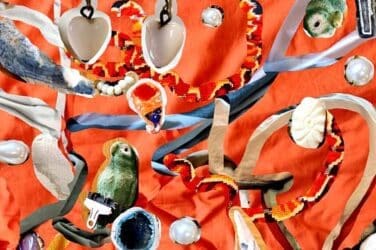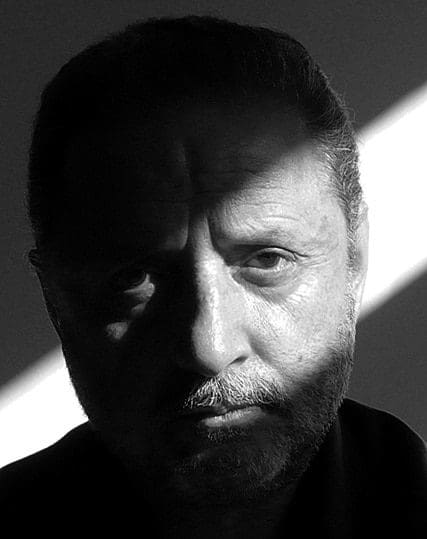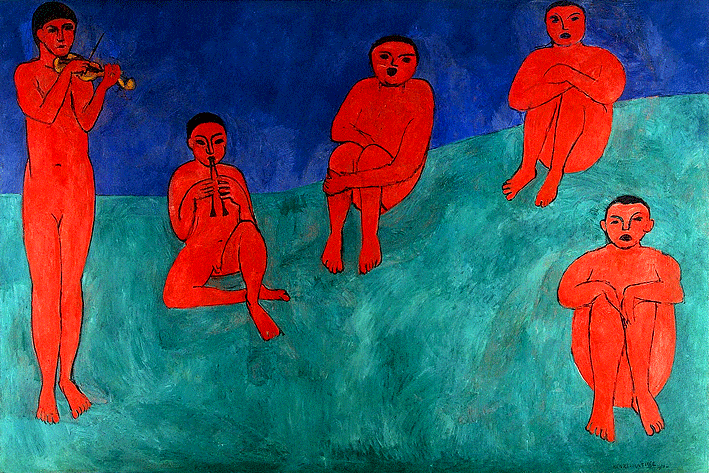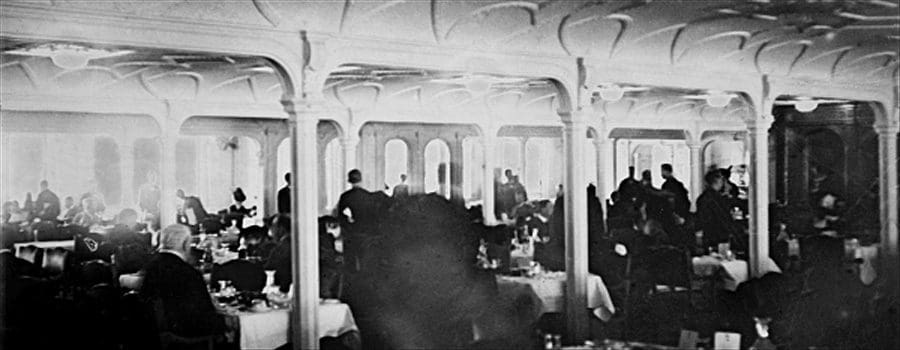words Lee Taylor
On April 12 2021 Matthew Zadok Williams was having a crisis. He had locked himself out of his own home and was frantic. He couldn’t get hold of any family member for help. Hearing the commotion, a neighbour called the police. When armed police descended to sort out the situation this I imagine would have made Matthew feel even more distressed.
He wouldn’t have known why heavily armed police were suddenly outside his home shouting warnings at him. Eventually he broke his way into his own home. He must have been desperate to find himself somewhere safe. The police though saw him as a threat. For his own safety they warned him to come outside but obviously scared and in a mental and emotional turmoil Matthew refused to move. It ended up with the police shooting him dead. He was dead in his own home. A place where he should have felt safe.
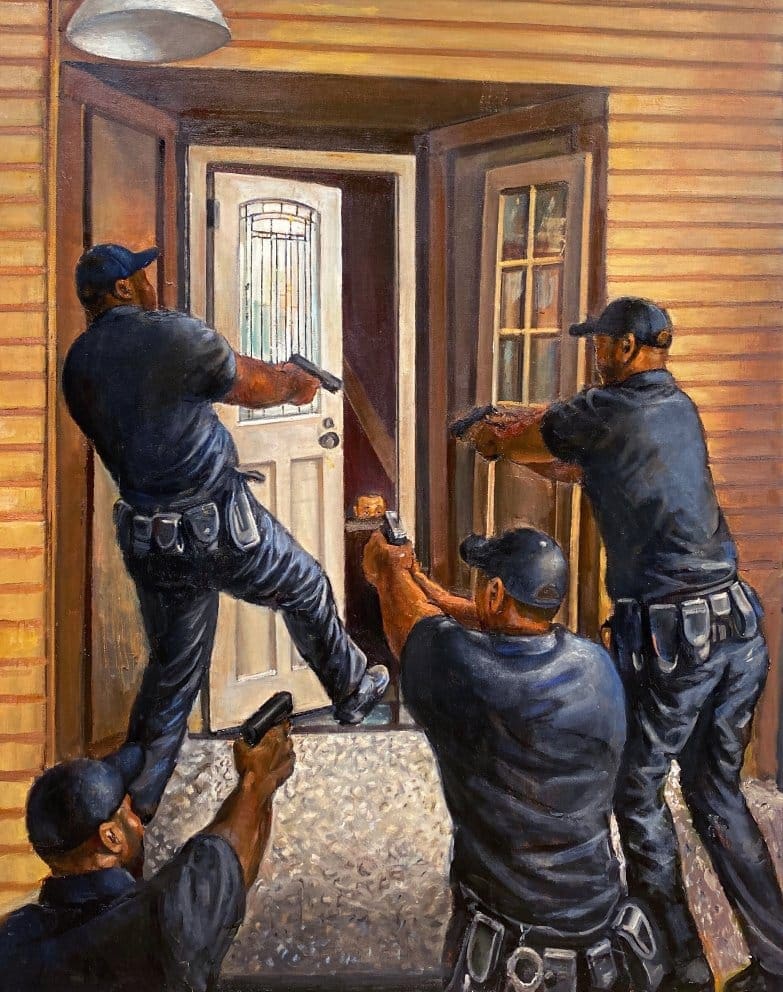
Matthew’s family approached the artist Don Perlis who was well known for creating the artwork for the George Floyd campaign. He created a piece for a public billboard campaign which is quite a known platform to raise public awareness in the US. The painting though was rejected by Lamar Billboards in New York, Chicago, and Atlanta, continuing a trend for the company. They have a history of rejecting images that depict black people facing injustice. Recently even Jay Z’s Roc Nation received a rejection from the same company.
We interview Don about the incident, the artwork and its subsequent banning. We also wanted to ask him about another series with a political edge known as Trumpworld.
How did the painting come about?
“I received a call from Hannah Williams, Zadok’s sister. She had seen the Floyd billboard and read about it. She related the story about her brother Zadok and how he was unjustly murdered by the police. She asked me for help and told me the family wanted to do a national billboard campaign about her brother to help right the wrong done to him, as the people who were responsible for his death were not yet brought to justice. I volunteered to make the painting for the Billboard and I notified the ” Floyd Justice Billboard committee” and asked if we should take it on.”
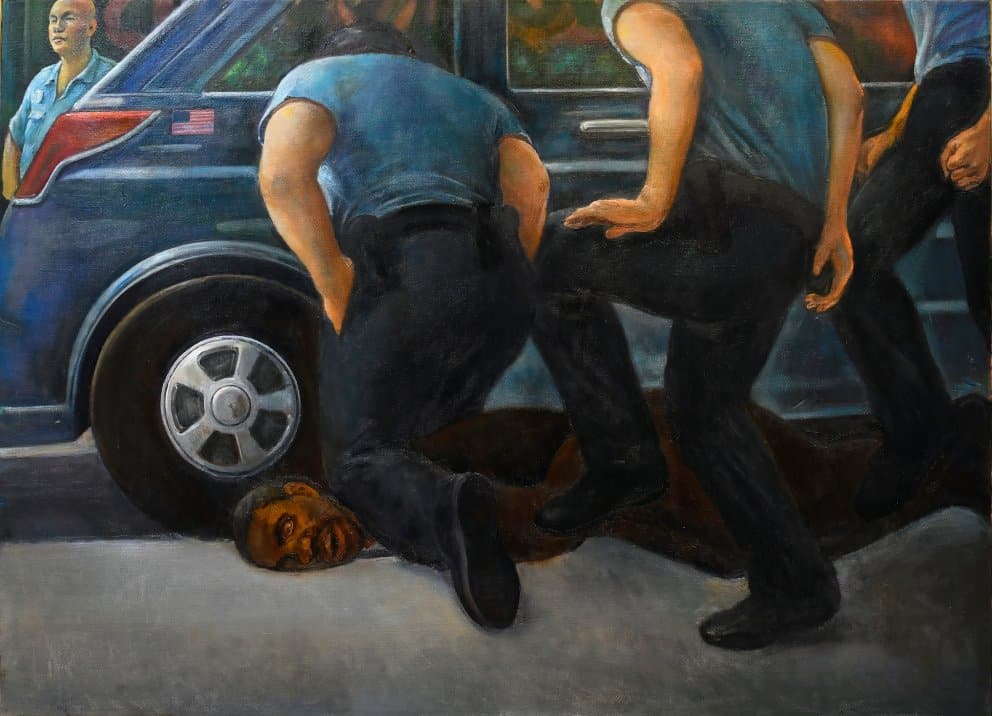
How did you decide what your painting would depict?
“I used the police body cam photos as primary reference as well as reading all the accounts. I wanted the painting to be accurate and depict exactly what had happened. I watched the videos over and over as well as read all the accounts numerous times, including the ‘New Yorker ‘article and the ‘People’ magazine article. I finally depicted the exact moment when he was hiding behind the ottoman and the 4 policemen were kicking open the door repeatedly.”
You were aware the painting was due to appear on billboards. Did this influence how you approached the piece?
“This was the scariest moment for him and the police actions were terrifying. I wanted people who saw this to react to the injustice of it. I wanted to depict his fear. The image had to be graphic, clear and immediate.”
When you first heard that the billboard company were refusing to allow the picture to be displayed what did you think?
“I was shocked. The Floyd Billboard had received international recognition and It was a lot more violent than this painting, so I thought they must be scared of it for other reasons. It’s easy to guess what those reasons might be.”
What reason have they given for the ban?
“They said it was not clear the incident happened that way and that the painting was accurately showing what had happened. It was obviously a phony excuse not to run as the one thing I made sure of was the accuracy. The Floyd painting was also censored in some cities.”
How have the family taken the ban?
“There’s a mom and a group of older sisters. Zadok was a good person. It was very tough for them, they felt hurt because what happened to him should not have happened, and they wanted it made public. Because of the accuracy of the painting, they insisted we persist with this image and not try to substitute a more milder scene from the incident.”
You have a political element to a lot of your work. How intrinsic is politics to your work?
“I make many other kinds of paintings and have a large range of subjects including many that cover other topics and themes. Politics are fascinating as they’re an important aspect of human relations, but only a part of my work. I’ve made many paintings that deal with social injustice since I began drawing and painting as a kid. Subjects such as the Goetz incident, the Elenor Bumpers killing in the Bronx, the murder of Michael Griffiths at Howard Beach and other incidents of injustice. I have also depicted the outrageous social conditions that exist for disadvantaged people.”
* * * * * * *
While carrying out research for the article I came across the artist’s remarkable Trumpworld series of paintings. It really captured the messed up but almost carnivalesque world of the huckster turned president. Like a deranged cult leader he invites his believers to leave all reason and logic at the door as they enter.
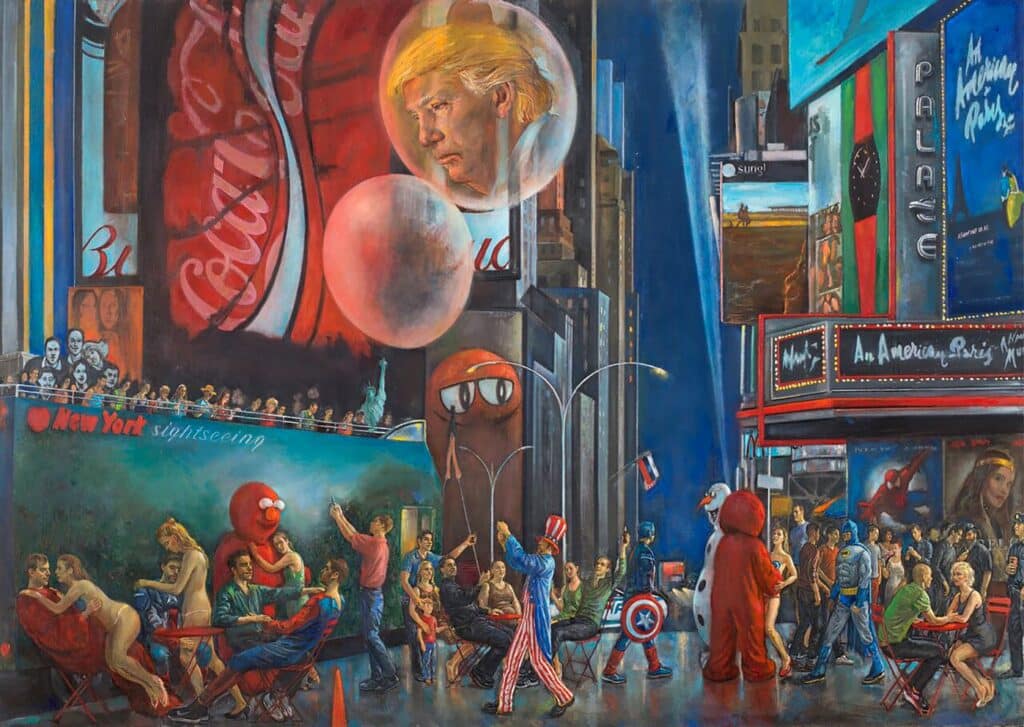
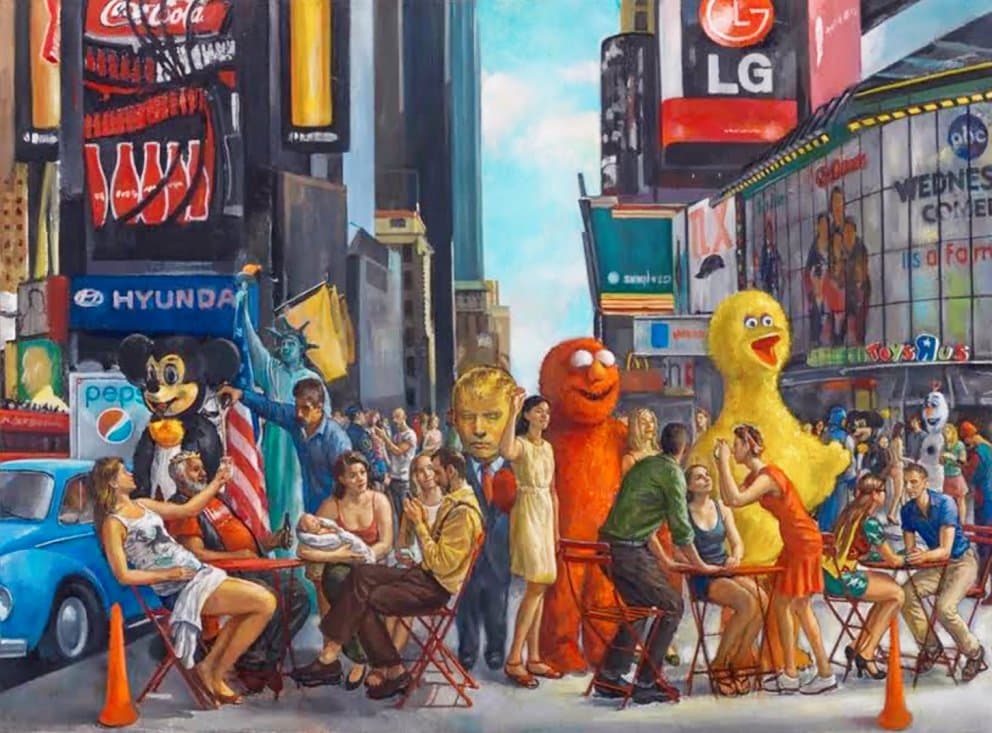
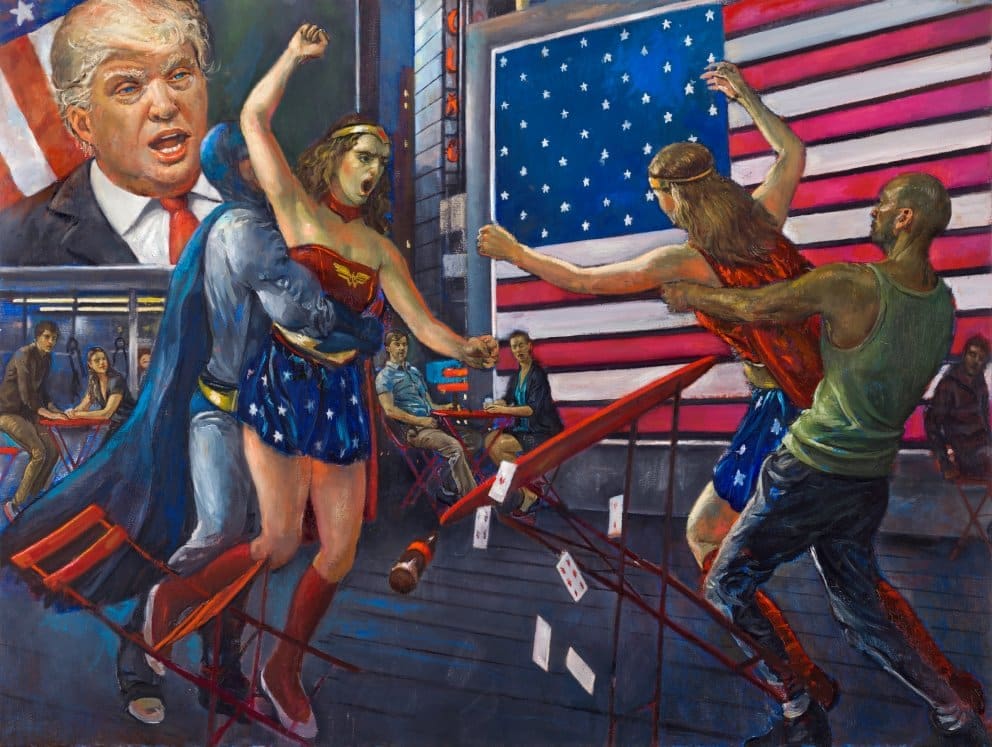
I love the Trumpworld series. What is it about Trump and his world that fascinates you?
“First thing you notice about Trump is how striking he is. The visual aspect of the entire phenomenon are what fascinates me. His performance was and is a circus, and completely American. It had a profound effect on all of us, and it’s affected our lives from our beliefs to our behaviour. It’s also not over.”
What the most intriguing feedback you had from your Trumpworld series?
“People love to see their life and times shown in art. There was a wonderful article in Italy in a major art publication that surprised me. Generally the response and coverage by the media have been welcome and gratifying but there also has been censorship.”
For more information on the artist Don Perlis visit www.donperlis.com















